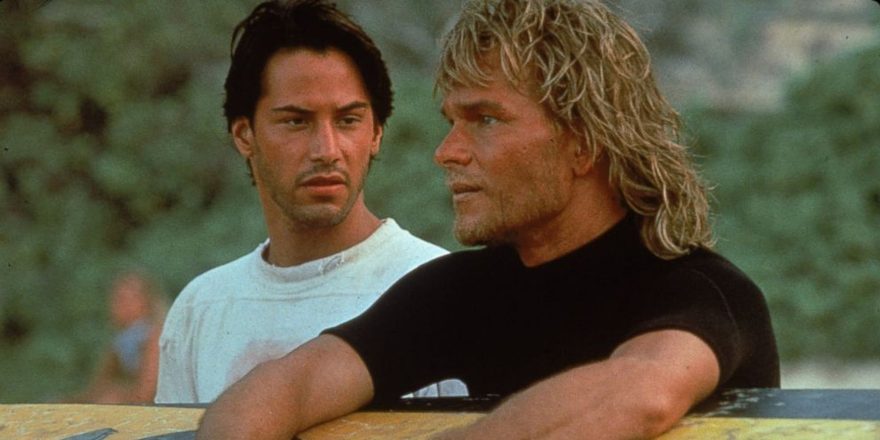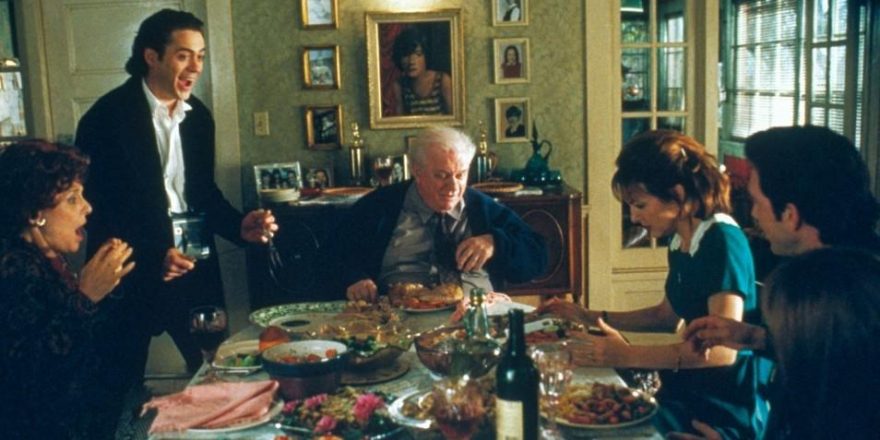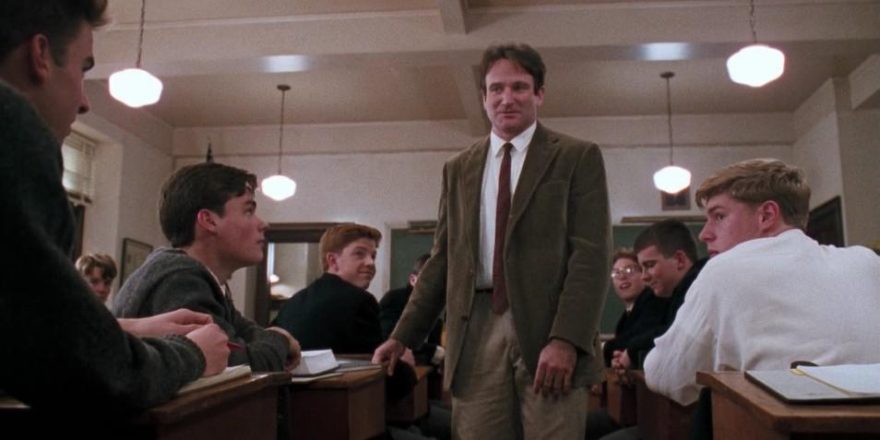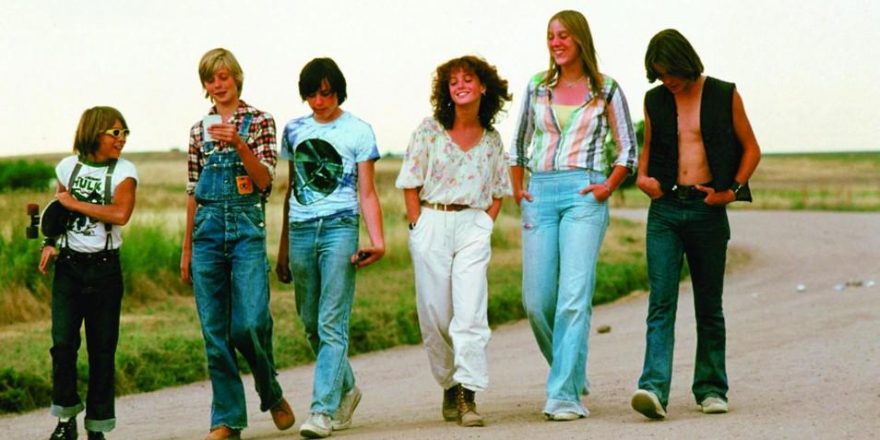Of all the mainstream movie magazines that have come and gone, there’s one embedded in my memory that I cannot find on the internet. It was circulated in the early 1990s, the sort of thin, floppy pop-culture ‘zine found in malls and grocery stores, that would’ve appealed to an 11-year-old just starting to become interested in what the grown-ups were watching, what was on the studio docket, what an actor was doing next, and what a director was exactly. I’m fairly certain it was called Hollywood Magazine, and the issue in mind, quite probably my first engagement with pop journalism (I would become obsessed with Premiere the following year), featured a Batman-era Michael Keaton on the cover, for his film One Good Cop. It was the Summer Movie Preview, and that was the summer of Backdraft, City Slickers, Robin Hood: Prince of Thieves and Terminator 2: Judgment Day (as well as The Doctor, Pure Luck and Mystery Date). It was also the summer of Point Break, 25 years old this summer, and it’s within those pages that I first caught a glimpse of Patrick Swayze, arms draped over a surfboard, looking melancholically into the distance, as Keanu Reeves stood beside him, serious. I remember being curious and confused that this still was apparently from a high-adrenaline action film, and being shocked to read that Patrick Swayze was the Bad Guy. Why did they look like friends?
In a fairly straightforward way, I can trace my deepening love and appreciation for cinema directly from one viewing of Point Break to another. I would have first caught it, likely multiple times, initially piecemeal, on network television in junior and senior high, swept up in the narrative and literally sensational set-pieces; next, on DVD in college, enamored with its poetry and moral ambiguity; and, finally, during multiple viewings between then and now, on DVD and Blu-ray, astonished anew at the total extraordinary package. It is a film firing on every conceivable cylinder, its exhilarating blend of action, morality, comedy, politics, spirituality and subversive-bordering-on-queer romance adding up to a genuinely poetic exploitation film in which every life has value. Somewhere around 2002 or 2003, just after college, I discovered critics Armond White and Dave Kehr, as well as Film Comment magazine, and was introduced to the ecstatic critical championing of the great Kathryn Bigelow in general and of the great Point Break specifically, enticing me to continue returning to the film with fresh eyes.
On the surface, there is little difference between how Point Break entertains a 35-year-old filmmaker/cinephile and a 14-year-old movie fan. From start to finish, it is a movie of stunning kineticism, fragmented but clear, dancelike in its physical orchestrations, with extraordinarily successful set-pieces that lovingly prioritize bodies in space and our innate understanding of them. In its straddling of art and exploitation, it mixes and mingles character types of the genre with unusually sympathetic and nuanced leads, in-your-face crudity (bone-crushing naked woman leading the pack) with haunting lyricism. This alternately chaotic and serene widescreen story engages our need for narrative, our physical drive, our emotions, and our hormones all at once, the cinematic equivalent of an intensely satisfying cheat meal. And yet, it’s only on repeated viewings that one starts to notice things like the time of day.
Midway through my young life re-viewings of Point Break, sequences that had previously played to me as generic downtime for conventional rhythm’s sake, requisite scenes of lightness and romance, began to seem no less vital to the picture, nor less important to Bigelow, than the showboat action sequences. Whether it was the late-night swim with Tyler (Lori Petty), the twilight suburban foot-chase or the midday, sun-scorched sky dive, this was a film that was evoking nature and time in ways that would’ve made Terrence Malick or Sofia Coppola proud. In this sense, Point Break has seemed to me, increasingly, to be one of the great Present Moment movies, such as The New World and Marie Antoinette, in which there movingly exists an ever-present half-awareness that this too shall pass. This is especially true in regards to the late Patrick Swayze’s performance, and not just in the posthumous, retrospective sense. Already 37 at the time, his truly great performance is one of deep melancholy, of an aging man’s attempted oneness with impermanence and the resulting loneliness incurred. It’s one of the most genuinely inspirational, achingly sad visual records we have of a once mighty hero, as devastating in its way as an Edison film of a small child in a garden, now a ghost.
Even as it engages sensually with nature, Point Break also deftly weaves moments of striking moral ambiguity into its narrative, another quality of this inexhaustible picture, revealed to those paying attention, over time. From Johnny Utah’s initial lie to Tyler to Bodhi and the Ex-Presidents’ relatively non-violent way of life, to Bodhi’s vengeful betrayal of Tyler, good and bad decisions in the film are not assigned according to our expected sympathies, but made randomly, by neither the good nor the bad, but the human. This free-flowing moral river culminates in the radical image of a police badge being thrown into the eternal sea.
It’s only once the physical, lyrical and moral power of Point Break has settled in that the way is paved for future viewings to bring to the front the sexual, class and national politics embedded in the film’s DNA. How revelatory to at once have come into my own queer identity, my own cinephilia and my personal love of this film on the same timeline! There are bodies galore, of all shapes and sizes, and nudity is even built into the action-movie narrative, as tan lines and naked asses lead Utah and his partner Pappas (Gary Busey at his wild best) to the bank robbers. Notice, too, the loving, sensual attention paid to bodies in transition, as when a surfer’s torso transforms into an Ex-President before our eyes, how Bigelow holds on Petty as she changes out of her swimsuit bottoms and into her jeans, or how Reeves and Petty form a reverse mirror image in bed, her back muscles rivaling his chest for power. To that, while much has been made of the obvious, visceral homoerotic undertones of the Bodhi-Utah relationship, I would put forth that the relationship Bigelow and screenwriter W. Peter Iliff build between Utah (Reeves) and the semi-androgynous Tyler (Petty) is the queerest relationship in a film of nothing but.
In the Age of the Thinkpiece, where everything is timely, connectable, a code to be cracked, I’m tempted to skip over the part where Point Break is “politically relevant.” But it is. Indeed it’s impossible to watch the film and not think of the Ex-Presidents as some kind of original Bernie Bros, interested in nothing more or less than rising above it all and taking back what’s rightfully theirs. Further, is there a more politically scalding image in cinema than Reagan-masked Bodhi using a gas pump to torch the earth? Of Nixon robbing a bank? Under the guise of mainstream multiplex entertainment, this kind of subversively nasty pop politics is arguably more effective and conscience-searing than your ordinary and obvious political satire.
In addition to evoking the romance and violence of a summer in Los Angeles, and of life in the fast lane in 1991, Point Break harkens also to a time before the Genre Picture became the new Prestige Picture, when movies were still dirty, and kept their mysteries buried deep. Point Break is indeed inexhaustible and multi-layered, with endless secrets to reveal over time, a veritable buffet for cinephiles; it also serves as a not-so-gentle reminder to chill out and enjoy the movie.






